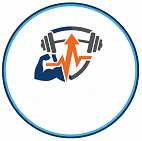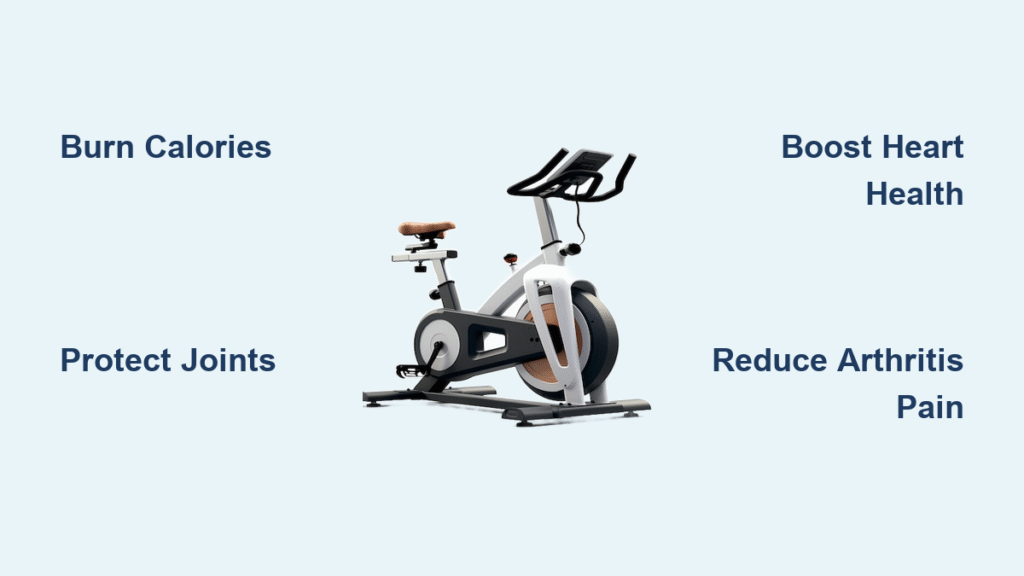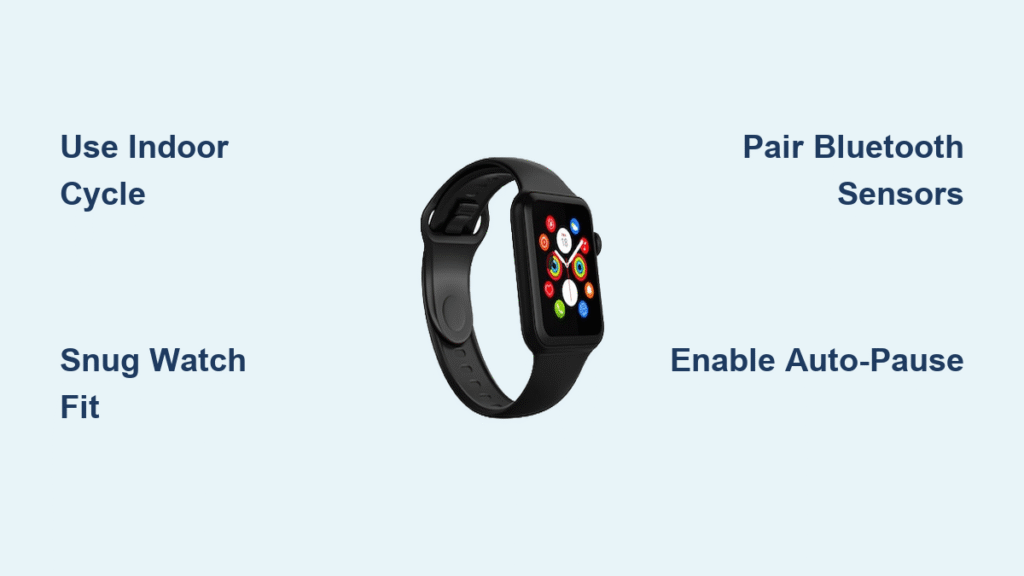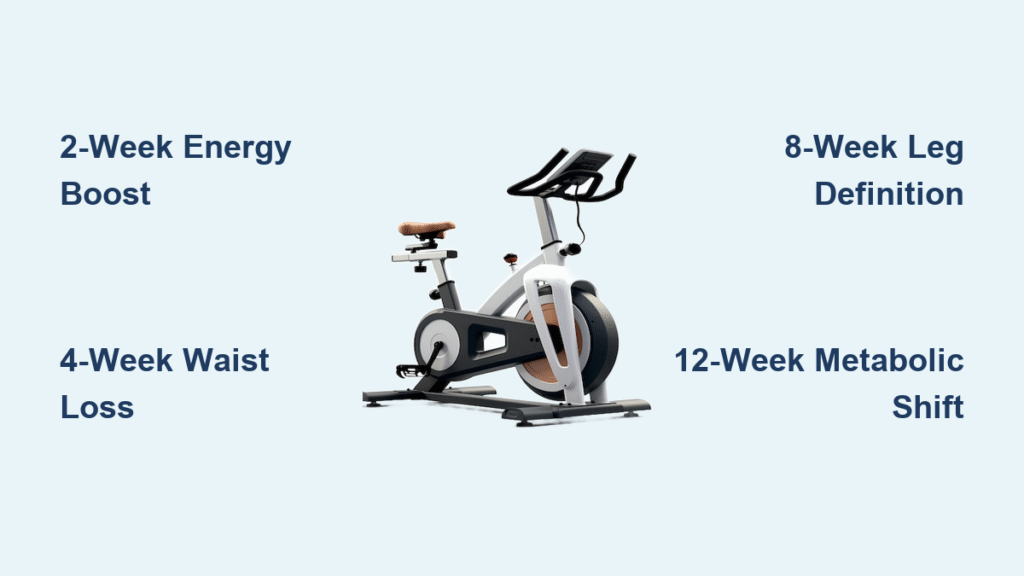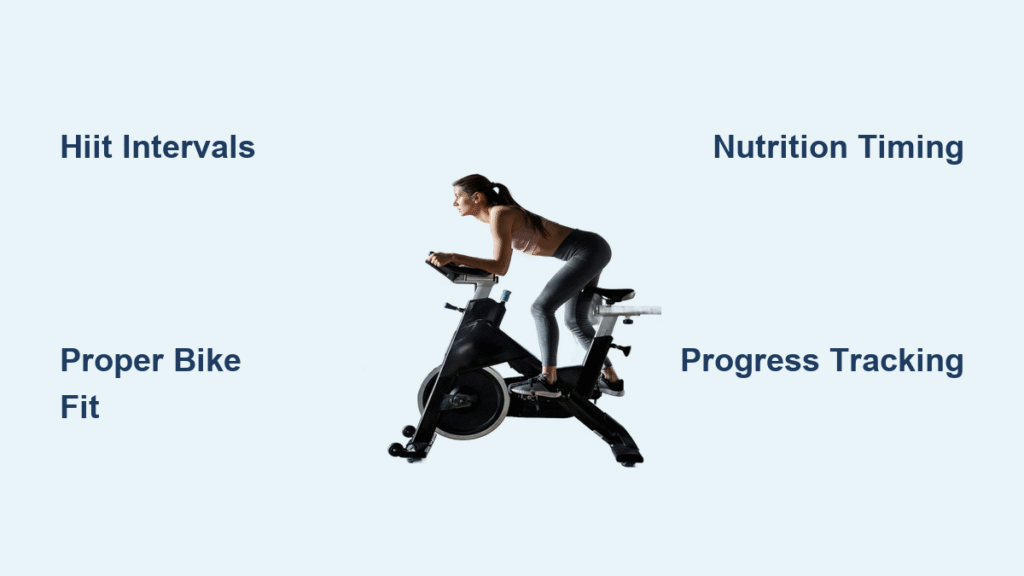Rain pelting your windows at dawn, icy sidewalks, or sweltering heat shouldn’t derail your fitness goals. That’s where your exercise bike becomes indispensable—the only cardio equipment delivering hospital-grade health benefits while fitting seamlessly into your living room. When you pedal consistently, you’re not just burning calories; you’re triggering physiological changes that protect your heart, rebuild your metabolism, and even rewire your brain. Forget generic fitness promises: research confirms that 30 minutes daily on a stationary bike slashes disease risk more effectively than sporadic outdoor workouts. In this guide, you’ll discover exactly how cycling reshapes your body and mind, with actionable protocols proven to deliver results whether you’re rehabbing an injury or training for a century ride.
Burn Calories While Protecting Your Joints
You’ll torch 210–294 calories in 30 minutes of moderate cycling (for a 155-pound person), matching outdoor running’s burn without joint trauma. Push harder, and vigorous pedaling burns 315–441 calories—equivalent to a 5-mile run—with zero impact on knees or hips. The real metabolic magic happens post-ride: a controlled study showed 45 minutes of intense cycling triggers 190 extra calories burned over the next 14 hours through elevated resting metabolism. For sustainable weight loss, commit to 30–60 minutes at moderate-to-high intensity, 3–5 days weekly, paired with a 300–500 calorie daily deficit. Brazilian researchers documented overweight participants shedding significant fat mass within 12 weeks using this exact protocol—no starvation diets required.
Proven Weight-Loss Protocols
- Beginner-friendly: 30-minute sessions, 3x weekly with 1,200-calorie meal plan → measurable fat loss in 3 months
- Rapid BMI improvement: Sedentary women (32–47 years) reached healthy BMI ranges in just 6 weeks
- Critical mistake to avoid: Skipping resistance work—add 20% resistance every 2 weeks to prevent plateaus
Slash Heart Disease Risk Through Daily Cycling
The American Heart Association prescribes 150 minutes of moderate cycling weekly as frontline defense against cardiovascular collapse. Within 8 weeks, consistent pedaling lowers resting heart rate by 5–10 BPM while improving arterial flexibility—critical for preventing plaque buildup. Mayo Clinic data shows cyclists reduce their risk of heart attack by 50% compared to sedentary peers, thanks to HDL cholesterol increases and triglyceride reductions. One metabolic syndrome study tracked 30 participants who combined cycling with dietary changes: after 12 weeks, every subject showed dramatic drops in blood pressure, fasting glucose, and LDL cholesterol. Warning: If you have uncontrolled hypertension, start with 10-minute sessions and get physician clearance first.
Heart-Health Milestones to Expect
- 2 weeks: Noticeable reduction in post-exercise breathlessness
- 8 weeks: Measurable drop in resting blood pressure
- 12 weeks: Improved lipid panel results at your next physical
Sculpt Lower-Body Strength Without Knee Damage
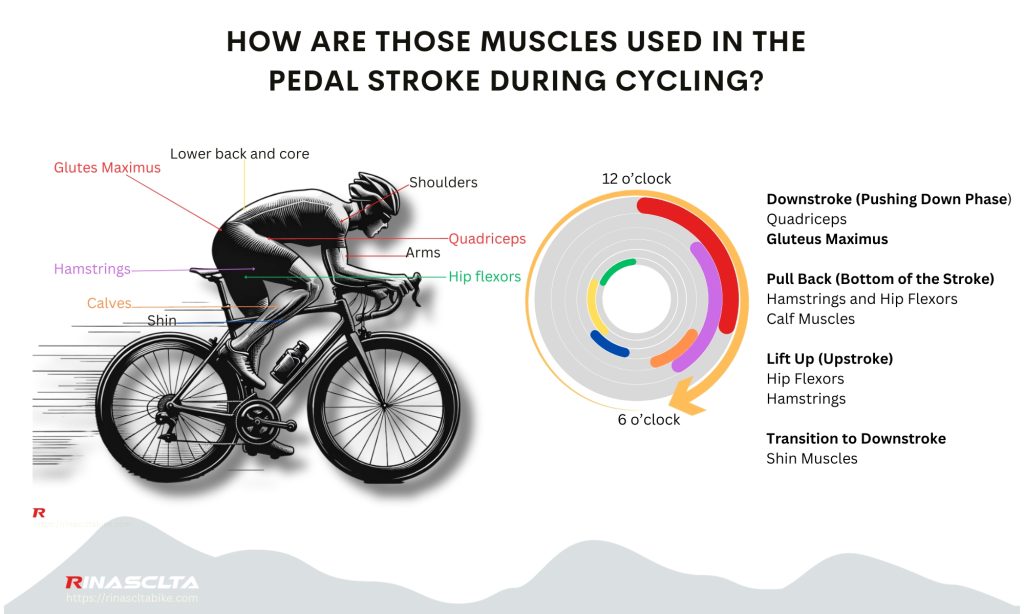
Unlike squats or lunges that stress joints, cycling builds lean muscle through smooth, circular motion. Your quads, hamstrings, and glutes fire continuously while core stabilizers (transverse abdominis and obliques) engage to maintain posture. Crank resistance above level 5 activates Type II muscle fibers for hypertrophy—comparable to leg press gains. For full-body engagement, dual-action bikes recruit biceps and deltoids through moving handlebars. Visual cue: When pedaling, watch for even power distribution—your knees shouldn’t wobble inward, which indicates weak glutes.
Muscle Activation Checklist
- Quads/hamstrings: Feel burn during high-resistance climbs
- Glutes: Engage when pulling up through the pedal stroke’s back half
- Core: Maintain neutral spine without gripping handlebars excessively
- Calves: Activate during toe-pointing phases of sprints
Eliminate Arthritis Pain Through Controlled Motion

Ground-breaking research in Clinical Rehabilitation confirms stationary cycling reduces knee osteoarthritis pain by 40% in just 6 weeks. The pedal’s circular motion stimulates synovial fluid production—nature’s joint lubricant—while strengthening muscles that support damaged cartilage. Unlike walking, cycling eliminates ground-reaction forces that accelerate joint deterioration. For severe arthritis or back issues, recumbent bikes provide full lumbar support while maintaining safe range of motion. Pro tip: Warm up joints first with 5 minutes at resistance level 1 before increasing intensity.
Transform Body Fat Into Lean Mass
Twelve-week cycling studies consistently show participants dropping 3–5% body fat while gaining metabolically active muscle. This body composition shift occurs even without dietary changes, but combining 45-minute rides (3x weekly) with protein-focused meals accelerates results. The key lies in cycling’s dual metabolic effect: immediate calorie burn plus sustained elevation of resting metabolic rate for up to 14 hours post-workout. One trial documented sedentary women reducing BMI from 28.7 to 24.3 in 6 weeks—proof that consistent effort overcomes genetic predispositions.
Boost Lung Capacity With Interval Training
While steady cycling improves baseline oxygen uptake, high-intensity intervals maximize VO₂ max gains. Alternate 60-second sprints (resistance 8–10) with 90-second recovery (resistance 3–4) for 20 minutes to enhance ventilatory efficiency 27% faster than moderate pacing. This protocol particularly benefits desk workers with shallow breathing patterns. Critical safety note: If you experience wheezing or chest tightness, stop immediately and consult a pulmonologist—asthma sufferers often see symptom improvement with controlled cycling.
Fix Desk Job Posture in 15 Minutes Daily
Maintaining upright alignment on an exercise bike retrains deep core stabilizers and erector spinae muscles weakened by slouching. Within 3 weeks, riders report reduced lower back pain during office work as proper spinal positioning becomes automatic. Adjust handlebars so elbows bend slightly with shoulders relaxed—this mimics ideal desk ergonomics. Common mistake: Gripping handlebars too tightly, which shifts strain to neck and shoulders. Instead, rest hands lightly while engaging your core.
Crush Stress With 20-Minute Mood-Boosting Rides
Just 20 minutes of self-paced cycling floods your brain with endorphins while lowering cortisol by 27%, according to Psychology, Health & Medicine research. The convenience of home workouts eliminates gym anxiety, and pairing rides with podcasts or Netflix increases adherence by 63%. For maximum mental health impact, cycle outdoors via virtual apps like Zwift—simulated scenery reduces perceived exertion by 18% compared to staring at a wall.
Never Skip Workouts Due to Weather or Safety
Your exercise bike operates 24/7 regardless of blizzards, wildfires, or unsafe neighborhoods—critical for maintaining the consistency that builds fitness. Unlike outdoor cycling, you avoid traffic hazards, potholes, and unpredictable drivers. Time-saving hack: Keep cycling shoes by the bike for instant 10-minute “snack sessions” during work breaks. Busy professionals using this tactic average 47% more weekly cardio minutes than those relying solely on gym access.
Customize Workouts for Any Fitness Goal
Instant resistance adjustments let you switch from fat-burning (moderate resistance, 80–100 RPM) to muscle-building (high resistance, 60 RPM) in seconds. Follow these evidence-based protocols:
– Weight loss: 5-min warmup → 25-min alternating 2-min sprints/3-min recovery → 5-min cooldown
– Endurance: 45-min steady ride at 70% max heart rate
– Beginner: 20-min sessions at resistance 3–4, building 5 minutes weekly
Start Pedaling Today With Zero Learning Curve
Unlike complex gym machines, exercise bikes require no instruction—simply adjust seat height to hip level and pedal. Within 3 sessions, you’ll master proper form. Urgent tip: If time-crunched, accumulate fitness in 5–10 minute bursts; research confirms these micro-sessions deliver 80% of the metabolic benefits of longer rides when done consistently.
Choose Your Ideal Bike Type in 5 Minutes

Match your needs to these four categories:
– Upright bikes: Compact footprint, traditional posture ($200–$500)—best for most home users
– Recumbent bikes: Back support, forward pedals ($300–$1,200)—ideal for arthritis or back pain
– Spin bikes: Heavy flywheel, aggressive lean ($500–$2,500)—for high-intensity training
– Air bikes: Full-body resistance ($700+)—max calorie burn with no electricity
Prevent Injury With 2-Minute Setup Protocol
Stand beside your bike: adjust seat to hip-bone height. When seated with heel on the pedal (lowest position), your knee should fully straighten. Switch to ball-of-foot position—you’ll now have optimal 25–30° knee bend. Pain rule: Stop immediately for sharp joint pain; if post-ride discomfort exceeds 2/10 on pain scale, reduce resistance 50% next session.
Maximize Results With CDC-Approved Weekly Plan
Hit the gold standard of 150 minutes moderate cardio weekly through:
– Monday/Wednesday/Friday: 30-minute rides at resistance 5–7
– Tuesday/Thursday: 20-minute strength training
– Weekends: Active recovery (walking, stretching)
Critical insight: Adding just 10 minutes weekly prevents the “plateau trap” that derails 73% of new exercisers.
Your exercise bike is the most scientifically validated tool for sustainable health transformation—no traffic, weather, or joint pain can stop your progress. By implementing these protocols, you’ll burn calories while rebuilding your cardiovascular system, sculpt lean muscle without injury risk, and rewire your brain for lasting motivation. Start with 15 minutes tomorrow: adjust your seat, select resistance level 3, and pedal through one episode of your favorite show. Within 30 days, you’ll notice tighter jeans, easier stair climbing, and a calmer mind. The road to vitality isn’t outside—it’s right under your feet.
